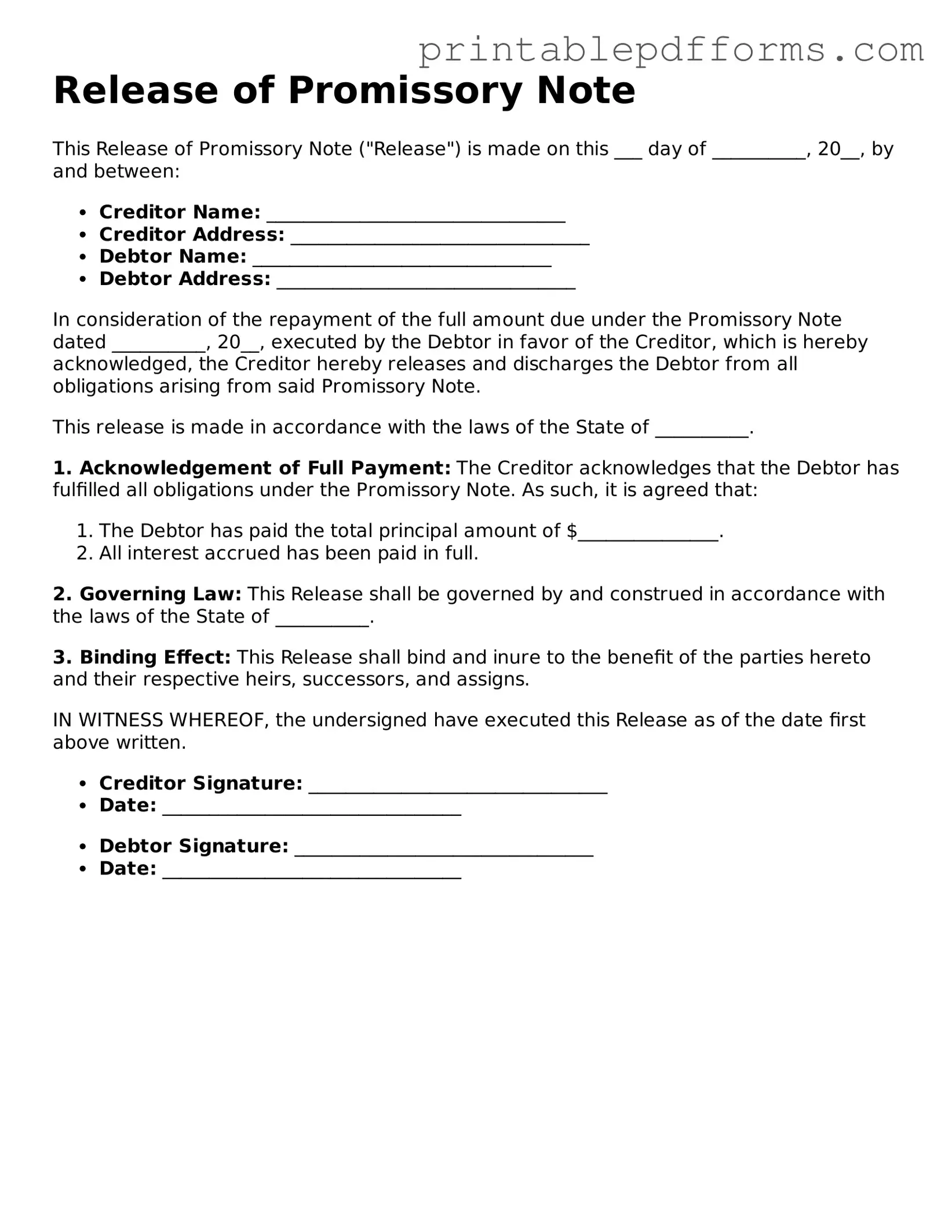Release of Promissory Note
This Release of Promissory Note ("Release") is made on this ___ day of __________, 20__, by and between:
- Creditor Name: ________________________________
- Creditor Address: ________________________________
- Debtor Name: ________________________________
- Debtor Address: ________________________________
In consideration of the repayment of the full amount due under the Promissory Note dated __________, 20__, executed by the Debtor in favor of the Creditor, which is hereby acknowledged, the Creditor hereby releases and discharges the Debtor from all obligations arising from said Promissory Note.
This release is made in accordance with the laws of the State of __________.
1. Acknowledgement of Full Payment: The Creditor acknowledges that the Debtor has fulfilled all obligations under the Promissory Note. As such, it is agreed that:
- The Debtor has paid the total principal amount of $_______________.
- All interest accrued has been paid in full.
2. Governing Law: This Release shall be governed by and construed in accordance with the laws of the State of __________.
3. Binding Effect: This Release shall bind and inure to the benefit of the parties hereto and their respective heirs, successors, and assigns.
IN WITNESS WHEREOF, the undersigned have executed this Release as of the date first above written.
- Creditor Signature: ________________________________
- Date: ________________________________
- Debtor Signature: ________________________________
- Date: ________________________________
